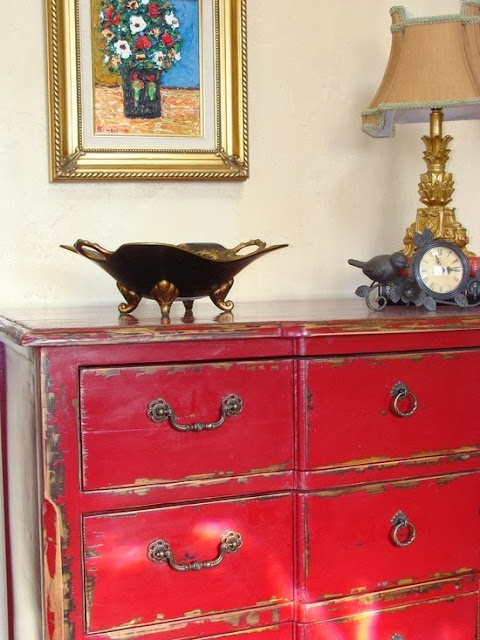This photo has been floating around in my files for a long time. It's in with the
"I want to do that some day"
pictures. Well the day has
come and I am here to share
my creation.
I used Annie Sloan's Primer Red Chalk Paint.
A lot of people are nervous about how to distress,
how much to distress, or even if they should distress.
There are many different methods and tools that can be
used but the simplest and easiest to understand is sand
paper. When I sand I work with
220 (smooth) 80 (course) 120 (medium).
*************************************
**The following information applies to sanding Annie Sloan Chalk Paints.**
220 smooth's the finish, sands out drips & runs, and is good for edge distressing
120 removes paint quicker and in larger sections
80 is very aggressive and should be used with great caution
The first place to sand is your edges,
this defines the shape of your project.
Secondly consider where natural wear is,
like hands always touching the drawer pull.
I distressed this piece to match the inspiration photo
(source unknown)
#1 Be aware that too much flat surface distressing is not as desirable
#2 Always keep your sand paper moving in the direction of the grain
Natural wear spots are made when the surface has
been rubbed over time and in turn the wood grain shows.
If you start crossing the grain with your sand paper it will
look like a hack job. Most electric sanders move in an orbital
motion so I do not use one.
BEFORE AFTER
Good luck with your next distressing project
and be brave and bold.
INSTAGRAM @4_the_love_of_wood
********************************
Advertisement








































